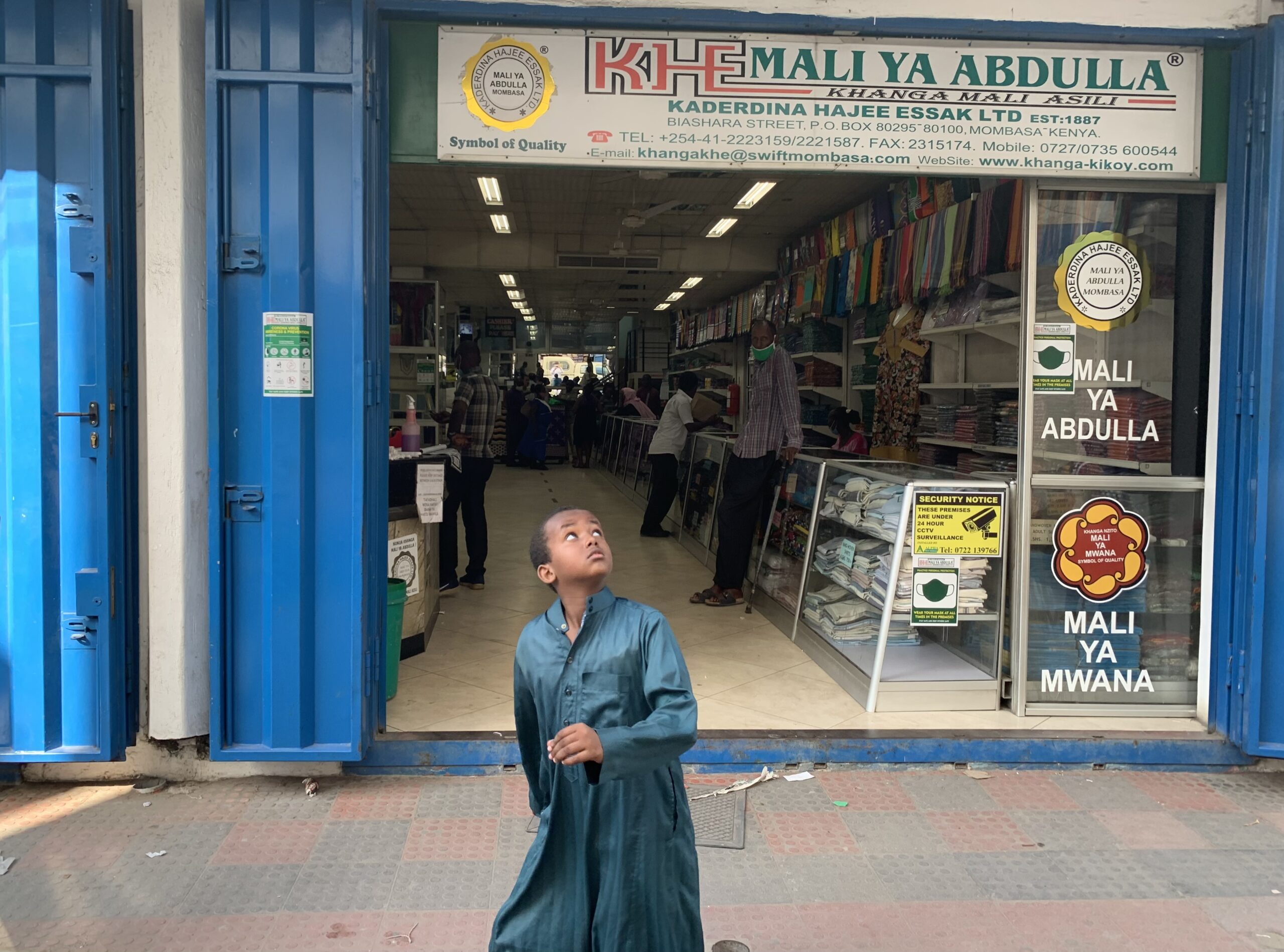How many khanga designs have been produced in the 150 years since the first khanga appeared? Hundreds? Thousands? It’s a key question if you aim to make a design archive. And the answer is that no one knows.
In the present day new khanga designs supplant the old with dizzying speed. Historically, some textiles manufacturers have maintained their own archives, but these are few. And there are many manufacturers – in Kenya, Tanzania and India and, in earlier times, the Netherlands and Japan. There’s no public record of Khanga design, no universal catalog, and little informatIon to identIfy the origin of a partIcular khanga. Marks on the selvage may reveal the place of manufacture, but not the year, nor the designer’s name.
Although khangas are made in many places, most are designed and marketed in East Africa. Recently, in Kenya, in Mombasa, we interviewed a khanga designer, Ahmed Kaderdina, of Mali ya Abdalla, his family textIle emporium, the oldest and best known in East Africa. The company has been run by the Kaderdina family for many generaIons: Ahmed’s ancestor Hajee Essak was
the first trader to sell khangas in Kenya. How many khanga designs has Mali ya Abdalla produced over the years since then, we wondered.
The shop is in a narrow street in downtown Mombasa, crowded with cars and carts and people. And the shop itself is packed with customers, many wearing khangas and pouring over new stock. In Ahmed Kaderdina’s office above the shop we had a lengthy and wide-ranging conversaIon about the history of the company and the evolutIon of khanga design. (A longer account of this to come in a separate report.) After a while we asked the pressing quesIon: how many new khanga designs did the company introduce in a year? Two or three? Half a dozen?
“Well,” said Ahmed Kaderdina, “The khanga is a fashion item. People want new ones all the time. We usually exhaust the stock of a new design of khanga in a couple of months”
And how often were new designs introduced?
“Generally,” said Ahmed, ”We launch two new designs per week.”
Two new designs a week. So that would be a hundred in a year. And Mali ya Abdalla has been in business a long time. And the company is just one of the many manufacturers of khanga. Though the fashion cycle was doubtless slower in earlier years, the number of different designs over time is sIll large: in the thousands or tens of thousands. Ten thousand khangas. That’s a lot of Khangas to track down.
